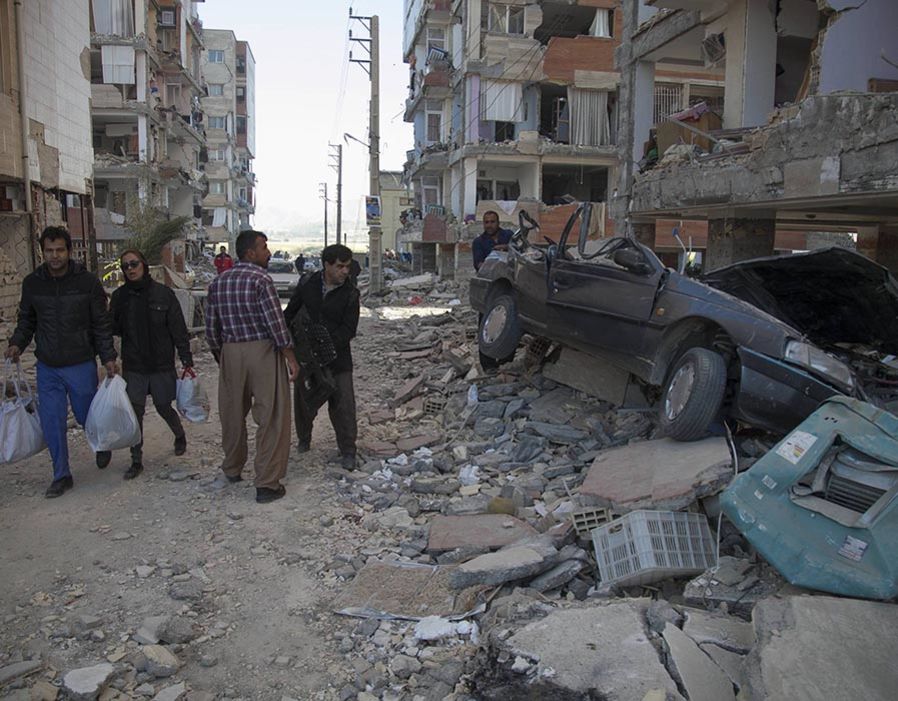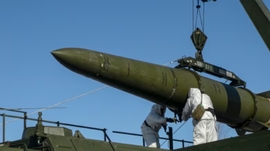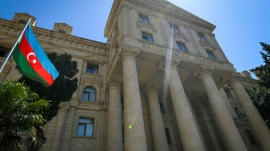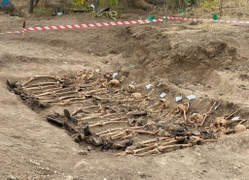Over 340 people lost their lives as a result of an earthquake measuring 7.3 on the Richter scale that hit western Iran on Sunday night.
As of Monday morning, at least 341 people have been killed and 5,346 injured, according to Iran’s Financial Tribune.
The epicenter of the quake was in the city of Azgeleh in Iran's western province of Kermanshah, which borders Iraq. However, the highest casualties occurred in the town of Sarpol-e Zahab, and the quake was followed by a series of aftershocks in the border regions between Iran and Iraq.
The quake, with its epicenter at a depth 11 km (6.8 mi), occurred at 9:48 p.m. local time, or 18:18 GMT. The resulting damage included a number of buildings in rural areas having been destroyed, and cracks appearing in the walls of villages and towns some 122 km (76 mi) to the west of Kermanshah city.
According to the seismological center at the Geophysics Institute of Tehran University, the quake was felt across Iran, Iraq, Kuwait, Syria, Turkey and Lebanon.
An Iraqi meteorology official put its magnitude at 6.5 with the epicenter in Penjwin in Iraq's Sulaimaniyah province, close to the country’s main border crossing with Iran. According to the Iraqi Interior ministry, at least seven people were killed and 150 injured in Iraq's northern province of Sulaimaniyah.
Reacting to the tragic event, Iran's Supreme Leader Ayatollah Ali Khamenei offered his condolences on Monday, urging all government agencies to do all they could to help those affected.
Iranian President Hassan Rouhani is scheduled to visit the quake-stricken areas on Monday while Interior Minister Abdolreza Rahmani Fazli, heading a delegation, left for quake-hit province of Kermanshah on Monday morning upon an order by President Rouhani.
Hospitals in the Iranian western cities of Eslamabad-e-Gharb, Sarpol-e-Zahab, and Qasre-e-Shirin are packed with injured people, and the death toll is expected to rise.
Iran is crisscrossed with fault lines and is regularly hit by earthquakes, experiencing at least one slight tremor every day on average. The most recent quake that resulted in mass casualties hit Bam, in southeastern Kerman province in December 2003, killing 31,000 people – about a quarter of its population.
The deadliest quake in Iran was in June 1990 and measured 7.7 on the Richter scale, when about 37,000 people were killed and more than 100,000 injured in the northwestern provinces of Gilan and Zanjan.







 The modernized and expanded Georgian segment of the Baku-Tbilisi-Kars (BTK) railway is set to recommence freight operations this month.
The modernized and expanded Georgian segment of the Baku-Tbilisi-Kars (BTK) railway is set to recommence freight operations this month.
 Azerbaijan, Uzbekistan, and Kazakhstan are planning to merge their energy systems following a historic memorandum of understanding (MoU) signed by ...
Azerbaijan, Uzbekistan, and Kazakhstan are planning to merge their energy systems following a historic memorandum of understanding (MoU) signed by ...
 The Azerbaijani government has rejected the recent claims made by French Interior Minister Gérard Darmanin, who accused Baku of fostering separatis...
The Azerbaijani government has rejected the recent claims made by French Interior Minister Gérard Darmanin, who accused Baku of fostering separatis...
 Ulviyya Fataliyeva, a female Azerbaijani chess grandmaster, was crowned this week at the European Women’s Chess Championship (EWCC) in Rhodes, Gree...
Ulviyya Fataliyeva, a female Azerbaijani chess grandmaster, was crowned this week at the European Women’s Chess Championship (EWCC) in Rhodes, Gree...
 President Ilham Aliyev praised Azerbaijan’s cultural diversity as a key factor in fostering peace, stability, and unity within the country, where a...
President Ilham Aliyev praised Azerbaijan’s cultural diversity as a key factor in fostering peace, stability, and unity within the country, where a...



